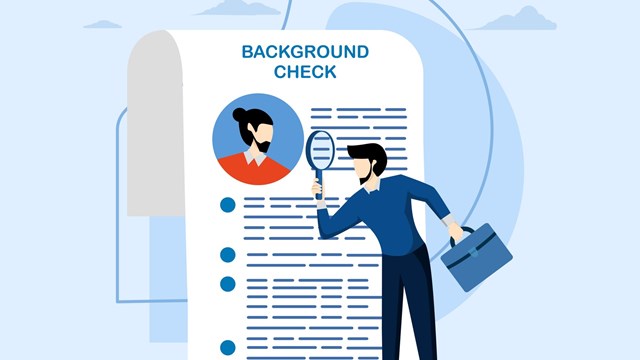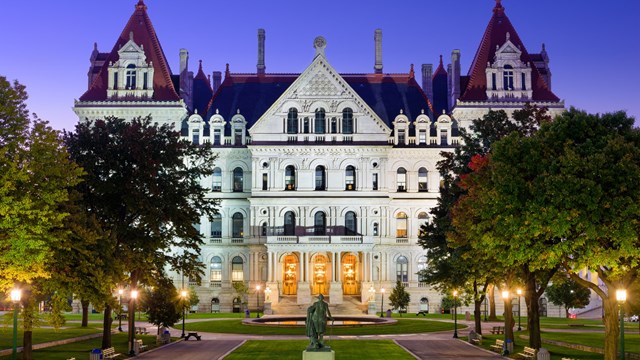Like so many other communities throughout the United States, New York City remains segregated in many respects—racially, economically, and socially—but even so, the city has achieved a level of housing integration despite the systemic forces at work against it. In many neighborhoods, public housing stands next to luxury co-op and condo buildings; neighbors share streets, parks, shopping districts, and to some extent even schools.
This integration has been fostered by public policy over many years, and ranges in scope from the micro (such as ‘80/20’ rental buildings in which 80 percent of units are rented at prevailing market rates, with the remaining 20 percent reserved for lower-income residents) to mid-sized developments (such as income-restricted and limited-equity co-ops and rentals built under the city’s Mitchell-Lama program), to massive, macro-level projects like Co-op City and Starrett City, planned and built from the ground up to create whole new communities meant to encourage people of varying backgrounds and means to live together.
So what are the benefits of mixed-income housing? And what challenges arise in communities of diverse means in a city known for sky-high living costs and warp-speed gentrification? And what can we learn from it all as we move forward in post-pandemic New York?
A Little Look at the Past
Amid the strong social and political forces unleashed after the end of World War II and continuing through the civil rights movement, as well as changes in the urban fabric of America during the 1960s, a number of programs were initiated to bring more diversity to the economic face of housing and neighborhoods in New York. Two of the most notable initiatives launched to achieve this goal were the Mitchell-Lama program and the establishment of HDFC co-ops.
The Mitchell-Lama program, named for the two New York State legislators who created it, brought a level of housing integration and stabilization to New York City neighborhoods. It stemmed the exit of white, middle-class residents from New York City for home ownership in the suburbs by offering middle-income renters the option of ownership in newly built, income-restricted co-op buildings. By contrast, HDFC co-ops were most often established in existing rental buildings that had been abandoned by their owners to the City. They provided a similar opportunity for in-place residents to own their apartments under income caps similar to those of Mitchell-Lama buildings. HDFC provided home ownership opportunities to lower- and middle-income New Yorkers who might otherwise never have had such opportunity.
“Morningside Gardens in Harlem, and Mitchell-Lama throughout the city, are excellent examples of what government can do to provide middle-class housing in a way that results in asset creation for middle-class people,” says David Eisenbach, a historian and lecturer in history at Columbia University. “Mitchell-Lama was signed into law in 1955. It created middle-income housing, both rental and co-op. The biggest landmark project under the program was Morningside Gardens north of Columbia University. With green space, and a very diverse population both racially and economically, it is a great success. The genius was to create these opportunities for people who were ‘hardcore’ New Yorkers. People were fleeing New York City, but these people wanted to stay—so this program also helped keep a tax base in New York City. The buildings were state-of-the-art, with fresh air, green space, and shopping. Each apartment had a terrace, etc. The building loans were backed through the tax system. It was an imitation of the earlier Federal Housing Act dating from the New Deal. The basic premise was to keep middle-class people in New York City to maintain the tax base to help build more.”
According to Eisenbach, Mitchell-Lama was a tremendous success—“perhaps the most successful project of its type in history. It provided not only housing for the middle class that was fleeing the city, but an asset—a co-op—as well. Now these people have an asset, and it accrues value. But the buildings had restricted sale rules to keep it middle income.”
Robert Snyder is an author, retired Rutgers University professor, and the current Historian for the Borough of Manhattan. He observes similar positive economic integration deriving from the HDFC home ownership program that’s been popular for some five decades in New York City. “HDFC co-ops are a great example of how we can provide mixed, affordable housing,” he says. “The Grinnell is a great example. It has both middle-class and working-class residents. It has worked really well for both groups for many years. The crunch comes when the original rules governing the economic status and requirements of residents expire. Will the residents make new rules and go to market rates, or will they continue with their previous approach as a community? The debates become fierce. Who are we to tell someone they can’t make a million dollars selling their apartment?”
The more recent ‘80/20’ program sought to achieve economic integration on a more micro level. The program set aside 20 percent of apartments in newly constructed luxury rental buildings for lower- and middle-income residents in exchange for tax benefits to the developers. The 80/20 rule has had mixed results, coming under much scrutiny in the past decade—and perhaps even worse publicity.
CooperatorNews spoke with several lower-income families who live in 80/20 buildings and who prefer to remain anonymous to preserve their privacy. They say that while they have benefited from the opportunity to live in a state-of-the-art building at an affordable price, they have not found the environment to be welcoming. For one thing, they say that there is little social integration in these buildings—the market-rate tenants and the lower-income tenants rarely mix, and in some cases, developers have made a point to physically separate the two demographics. The existence of two separate entrances for market- and reduced-rate residents, the latter colloquially known as “poor doors,” has been periodically called out in the press, and the very concept has left a bad taste in the public’s mouth. Some developers have also tried to limit the social impact of the inclusion of reduced-rate tenants by accepting only retired individuals on fixed incomes (as opposed to young singles and families), fulfilling the letter of the law, but not necessarily the spirit intended by the program concept to begin with.
Snyder puts it bluntly: “No, 80/20 hasn’t been a successful model. It doesn’t provide enough affordable housing, and it’s also viewed as a wedge to drive people out of the neighborhood, like in big redevelopment deals such as the one proposed for Inwood in upper Manhattan just prior to the pandemic.”
NOMICs
One of the unintended consequences of the housing market’s evolution over these past few decades is the emergence of naturally occurring mixed-income communities (NOMICs). These communities often result when longtime residents of a co-op or condo building age in place while younger, growing families move in. Because many older residents live on fixed incomes and are therefore more impacted by even modest cost of living increases, and many younger residents see an expanding economic future and want to capitalize on improving and expanding the value of their apartments and the building as a whole, it’s not uncommon for friction to develop between the two demographics over how the community allocates its spending.
Stuart Halper is vice president of Impact Management, a management firm with offices in New York City, Long Island, and Westchester. He manages over 100 buildings and says that “often the conflict erupts between older and younger residents. The younger residents have more spendable cash, and want to do more in the building. Generally, it comes down to who steps up to be on the board, because spending is a board decision. As properties gentrify and neighborhoods change, a new wave of people may come in. The boards change, and a real balancing act comes into play. The moving targets may change. Which projects are needed, and how to pay for them? When you don’t want to do it by assessment, you can finance the projects through borrowing and disburse payback over a longer time period. That said, by law there is no exemption for anyone from an assessment. There cannot be a two-tiered situation. There can be options to pay an assessment up front or over time, with an interest component—I’ve seen that done. It doesn’t happen often, but it helps older senior residents.”
“In the end,” says Halper, “what happens is that those who can’t afford rising maintenance costs and assessments will sell their units. There are safety nets for short-term problems, but when it’s not affordable anymore, ultimately the people will sell.”
So as it does on many other levels, economic integration in the context of multifamily housing remains elusive. Pros agree that some models of housing development and social engineering have been successful, and some haven’t. Some are the result of natural forces—though that doesn’t necessarily make for a smoother process, or one that truly works for everyone. Success in the longer term will likely depend on a combination of ingenuity, commitment, and sociopolitical will.
AJ Sidransky is a staff writer/reporter for CooperatorNews, and a published author.










Leave a Comment